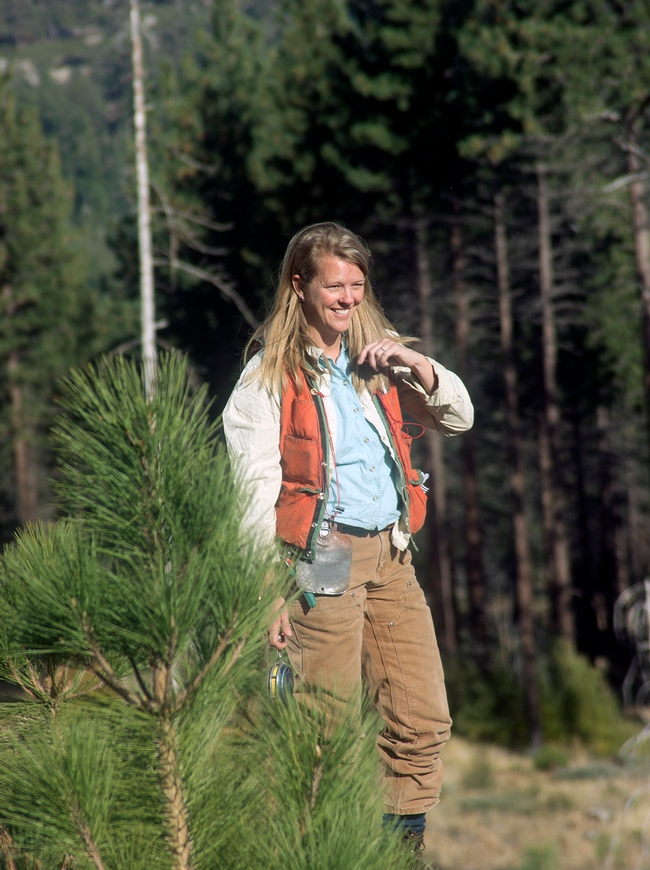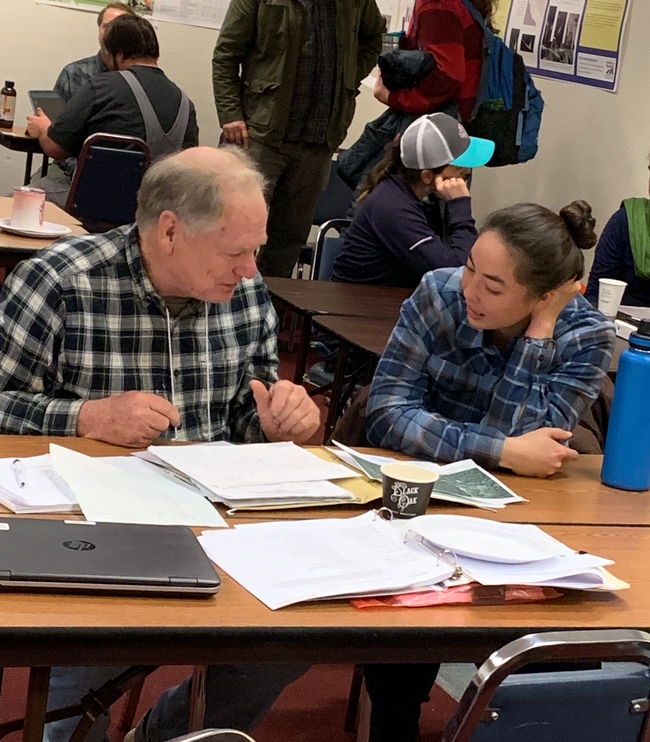With over 7,600 wildfire incidents and 2.2 million acres of forestland burned in California as of early September, it is understandable how some private forest landowners might feel both paralyzed and spurred into forest management activity at the same time. Yet even in these times of extreme weather and fire behavior, it is important to consider managing your forest, both before and after wildfire effects your forestland.
We know that California forest are fire-adapted systems. However, issues such as decades of fire suppression, the conversion of shrub habitats to conifer thickets, and the reduction and loss of both mountain meadows and more open forested habitats, have led to a huge build up in forest fuels and more severe fire behavior. Increased stress from drought and increased competition for water also leaves trees more vulnerable to insect and disease. Susie Kocher, Forestry and Natural Resources Cooperative Extension Advisor for the Central Sierra, and a registered professional forester, discusses why it is important for private forest landowners to develop a management plan and how a plan can lead to activities that could mitigate some of the negative impacts facing forests today.
Susie Kocher, Forestry and Natural Resources Advisor and registered professional forester
Q: What is a forest management plan?
A: A management plan outlines the goals and objectives a landowner has for their forestland. It describes the current condition of the forest, makes note of past management activities, identifies important natural and man-made features, and summarizes the landowner's vision for the future of their forestland. A plan can demonstrate your commitment to forest management for financial or tax purposes. A plan can be a guide to your heirs in continuing management activities you deem as important. Also, a plan helps you learn more about your forest.
A plan can be as simple as a list written by the landowner or as complex as a completed California Cooperative Forest Management Plan (CCFMP) that has been finalized and signed off on by a registered professional forester. It all depends on the goals and objectives of the landowner.
Q: Why should a private forest landowner have a plan?
A: Owning forestland comes with both benefits and responsibilities. Though landowners may enjoy their land immensely right now, they also need to protect the health of their forest for the future, including the water that runs through it, and the animal and plant habitats that are there. Landowners who live on the land, must also consider protecting their families and homes from wildfire and other natural disturbances. It is much harder to accomplish all of this without knowing what is on the landscape, what has been done to manage it before, and what still needs to be done to achieve these goals. A management plan gathers all of this information in one place and helps to chart next steps.
Forest landowners who work with a registered professional forester and have a completed CCFMP, can apply for cost-share programs (California Forest Improvement Program through Cal Fire or Environmental Quality Incentives Program through the Natural Resources Conservation Service). This funding can be applied to many of the activities landowners might be considering such as fuels reductions, habitat improvement, culvert and road improvements, or reforestation.
Q: What are the first steps a forest landowner can take to develop a management plan?
A: There are several first steps. First, a landowner should examine what they want for their forestland. Do the fuels need to be reduced? Are there post-fire activities like removing dead trees that need to be done? Write down and prioritize your objectives. Don't forget to consult with others if you own the property jointly. Knowing this before you contact a forester or other resource professional can help move the process along more quickly.
Next, contact your local Resource Conservation District (RCD) or Natural Resources Conservation Service (NRCS) office. Staff at both RCD and NRCS offices can help you connect with forest professionals, draft a management plan, or apply for cost-share money.
You may also consider attending a Forest Stewardship workshop though the University of California Cooperative Extension. The goals of these workshops are to help private forest landowners draft a CCFMP, connect with local RPFs, and to learn basic forest ecology and forest stewardship skills and information.
Forest Stewardship Workshop participant discussing his plan with Mary Mayeda, Forest Program Manager, Mendocino County RCD
Q: Are there costs for developing a management plan?
A: Yes, though this depends on how detailed a plan you want and need. A landowner who is not looking for cost-share money, or who simply wants to clearly communicate their desires for their property to others, can get by with a plan they develop using their own time and resources. If a landowner is working with an RPF to develop a plan, they will be paying an hourly rate or an overall fee to the RPF. EQIP and CFIP cost-share funds can be used to reimburse landowners for these plan development costs. Check with the local NRCS or Cal Fire office for the specific costs.
There is much work to be done in California to restore the health of our forests. Whether you are a forest landowner who has had wildfire on your property or not, addressing the effects of wildfire, or preparing for the eventuality of it, is going to take time, planning and resources. Having a forest management plan is a critical piece in this work. Don't wait.
For more information on Forest Stewardship, please see Forest Stewardship Series 2 A Forest Stewardship Framework, UC ANR Publication 8232.

